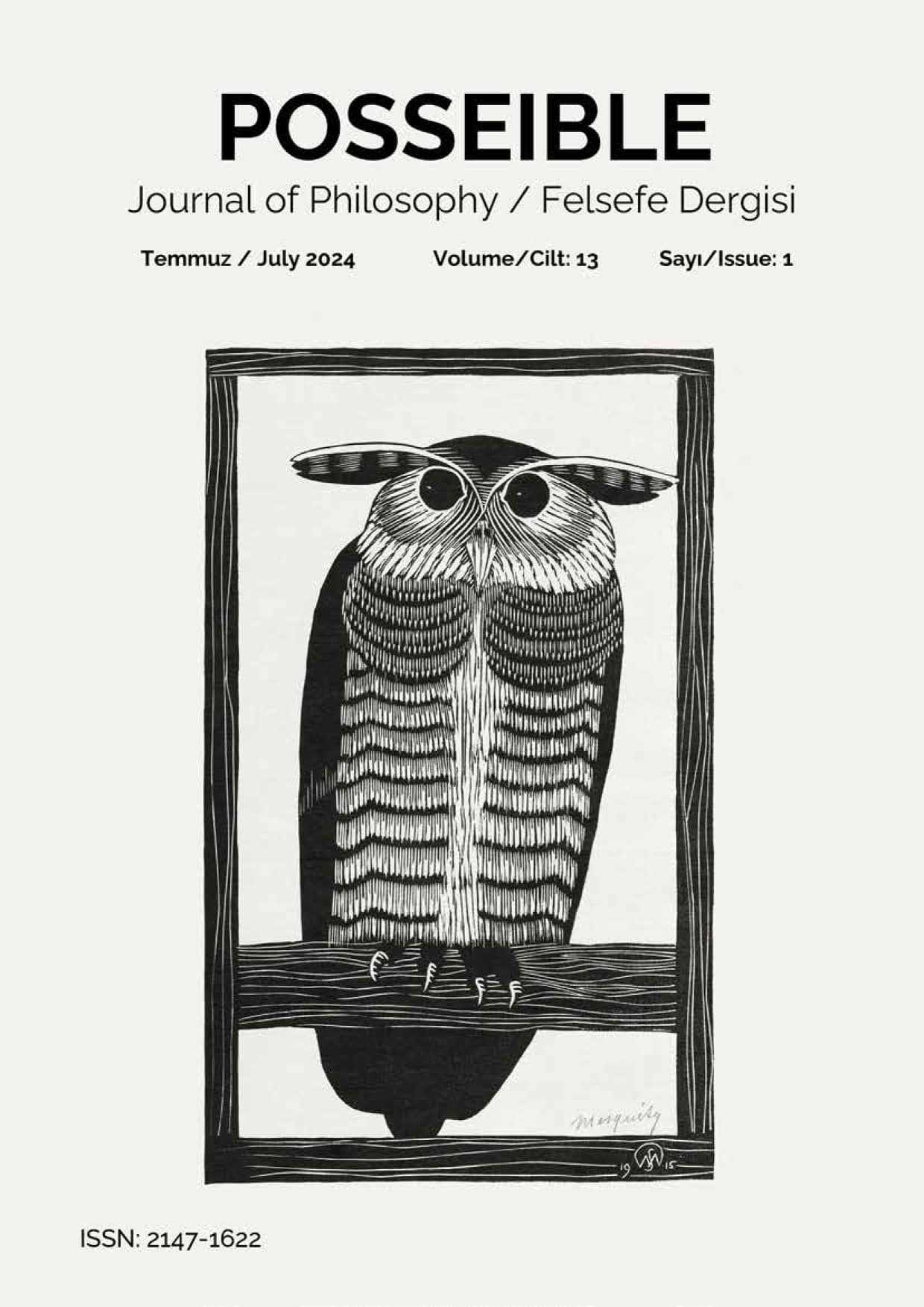Paul Ricoeur’s Threefold Mimesis and the Significance of Literature
DOI:
https://doi.org/10.5281/zenodo.12800279Keywords:
Ricoeur, Mimesis, Mutjos, Emplotment, Literary Text, Referentiality, StructuralismAbstract
In this essay, I am trying to show how literary texts refer to the extra-textual world by focusing on Paul Ricoeur’s understanding of threefold of mimesis. Ricoeur’s theory is an expanded and radical interpretation of Aristotle’s understanding of mimesis Ricoeur claims that in order to fully grasp the concept of mimesis, we need to interpret it in conjunction with the concept of muthos. On the other hand, by translating “muthos” not as “plot”, which is understood as a static and closed system, but as “emplotment “, Ricoeur gives mimetic activity a dynamic meaning. In this way, Ricoeur re-establishes the referential function of fiction, transforms the role of the reader from a passive receiver into an active participant in the mimetic activity, and reinterprets mimesis as a productive referent, rather than a mere copy. Ricoeur’s approach takes a stand against the “closed system” approach that prevents structuralist and semiotic criticism from going beyond the text. Ricoeur argues that the literary text is connected to the life-world. It refers to the world of action in a mediated way and reshapes the way the reader comprehends and makes sense of this world. This reshaping takes place during the act of reading which is defined as a multilayered process that starts from the reader’s world, moves through the literary fiction and returns back to the world of the reader. In order to understand this process, Ricoeur puts forward that we need to resort to the tools of phenomenology and hermeneutics. The task of phenomenological hermeneutics is to reconstruct this series of processes that originate in and flow towards life. In conclusion, Ricoeur’s theory of mimesis reclaims the referential function of fiction from its exile by shifting from the Platonic understanding of mimesis to the Aristotelian understanding of the concept and offers an original account of the relationship between fiction and reality by revealing the unique transformative power of literature.
References
Aristoteles. 2017. Poetika (Şiir Sanatı Üzerine). Çeviren Nazile Kalaycı. Ankara: Pharmakon Kitap.
Gorospe, Athena E. 2007. Narrative and Identity: An Ethical Reading of Exodus 4. Leiden: Brill.
Ingarden, Roman. 1973a. The Cognition of the Literary Work of Art. Çeviren Ruth Ann Crowley ve Kenneth R. Olson. Evanston: Northwestern University Press.
---. 1973b. The Literary Work of Art: An Investigation on the Borderlines of Ontology, Logic, and Theory of Literature. Çeviren George G. Grabowicz. Evanston: Northwestern University Press.
Iser, Wolfgang. 1980. The Act of Reading: A Theory of Aesthetic Response. Baltimore: Johns Hopkins University Press.
Jauss, Hans Robert. 1982a. Aesthetic Experience and Literary Hermeneutics. Çeviren Timothy Bahti. Minneapolis: University of Minnesota Press.
---. 1982b. Toward an Aesthetic of Reception. Çeviren Timothy Bahti. Minneapolis: University of Minnesota Press.
---. 1989. Question and Answer: Forms of Dialogic Understanding. Çeviren Michael Hays. Minneapolis: University of Minnesota Press.
MacIntyre, Alasdair. 1985. After Virtue: A Study in Moral Theory. London: Duckworth.
---. 1986. “The Intelligibility of Action.” Rationality, Relativism and the Human Sciences içinde, derleyen Joseph Margolis, Michael Kraussz ve Richard M. Burian, 63-80. Dordrecht: Martinus Nijhoff Publishers.
Melberg, Arne. 1995. Theories of Mimesis. Cambridge: Cambridge University Press.
Ricoeur, Paul. 1984. Time and Narrative. Çeviren Kathleen McLaughlin ve DavidPellauer. 3 vols. Vol. 1. Chicago: University of Chicago Press.
---. 1985. “The Text as Dynamic Identity.” Identity of the Literary Text içinde, derleyen Mario J. Valdes ve Own J. Miller, 175-186. Toronto: University of Toronto Press.
---. 1991a. “The Function of Fiction in Shaping Reality.” A Ricoeur Reader: Reflection and Imagination içinde, derleyen Mario J. Valdes, 117-136. Toronto: University of Toronto Press.
---. 1991b. “Life in Quest of Narrative.” On Paul Ricoeur: Narrative and Interpretation içinde, derleyen David Wood, 20-33. London: Routledge.
---. 1991c. “Mimesis and Representation.” A Ricoeur Reader: Reflection and Imagination içinde, derleyen Mario J. Valdes, 137-158. Toronto: Toronto University Press.
---. 1992. Oneself as Another. Çeviren Kathleen Blamey. Chicago: The University of Chicago Press.
---. 2005. Zaman ve Anlatı: 1. Zaman-Olayörgüsü-Üçlü Mimesis. Çeviren Mehmet Rifat ve Sema Rifat. İstanbul: Yapı Kredi Yayınları. 1983.
---. 2010. Başkası Olarak Kendisi. Çeviren Hakkı Hünler. Ankara: Doğu Batı Yayınları.
---. 2019. Yorum Teorisi: Söylem ve Artı Anlam. Çeviren Gökhan Yavuz Demir. İstanbul: Pinhan Yayıncılık.
Sheerin, Declan. 2009. Deleuze and Ricoeur : Disavowed Affinities and the Narrative Self. London: Continuum.
Vlacos, Sophie. 2014. Ricoeur, Literature and Imagination. New York: Bloomsbury

Downloads
Published
How to Cite
Issue
Section
License
Copyright (c) 2024 POSSEIBLE

This work is licensed under a Creative Commons Attribution 4.0 International License.






